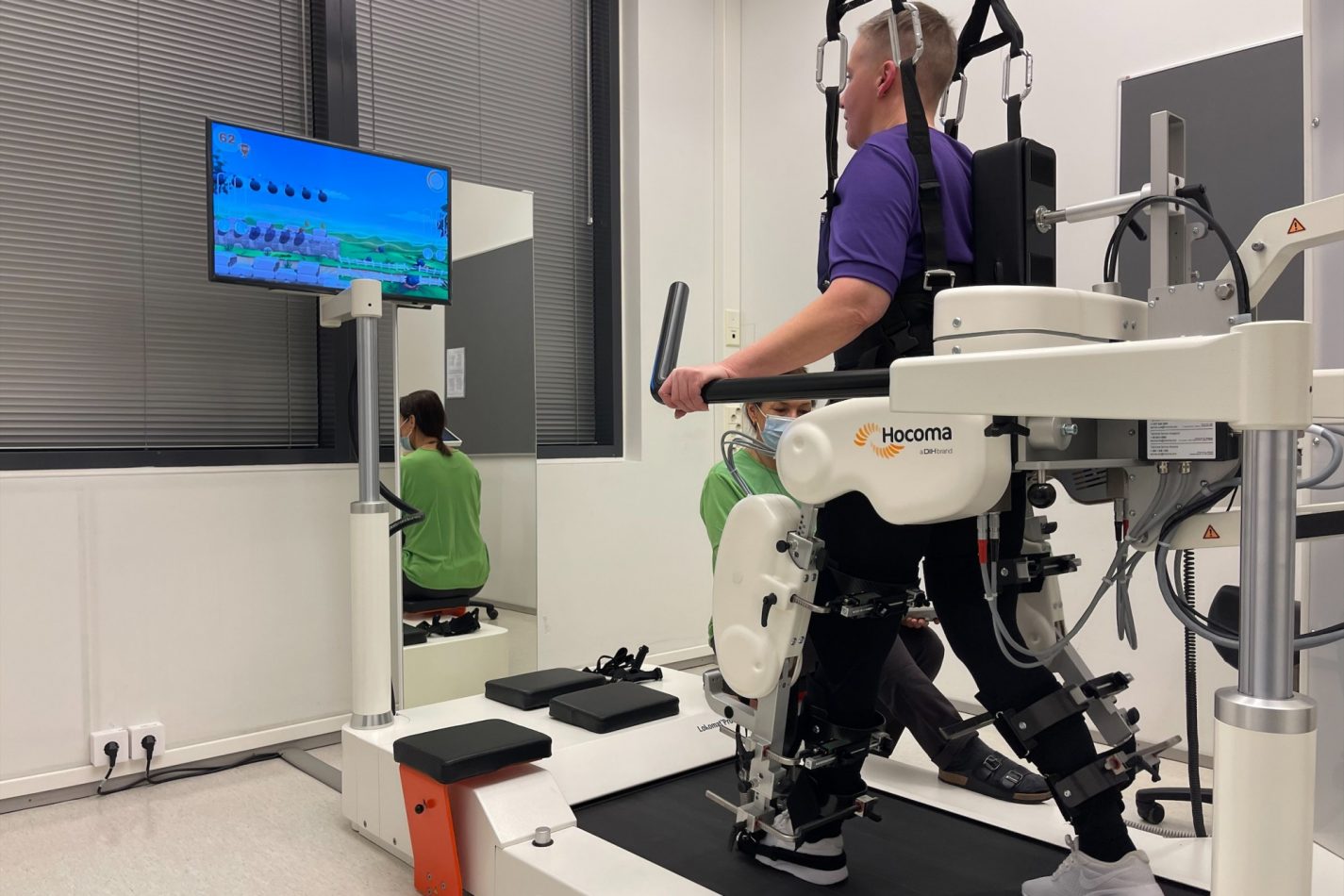On näyttöä, että aivohalvauksen subakuutissa vaiheessa intensiivinen
robottiavusteinen kävelyharjoittelu johti parempaan kävelynopeuteen ja
-matkaan verrattuna perinteiseen fysioterapiassa saman intensiteetin kävelyharjoitteluun.
J Rehabil Med. 2014 May;46(5):387-99.
doi: 10.2340/16501977-1805.
Evidence for the effectiveness of walking training on walking and self-care after stroke: a systematic review and meta-analysis of randomized controlled trials
Sinikka H Peurala 1, Auli H Karttunen, Tuulikki Sjögren, Jaana Paltamaa, Ari Heinonen
Affiliations expand
Abstract
Objective: To examine the effect of randomized controlled trials of walking training on walking and self-care in patients with stroke.
Data sources: MEDLINE, CINAHL, Embase, PEDro, OTSeeker, Central, and manual search to the end of August 2012.
Study selection: English, Finnish, Swedish, or German language walking training randomized controlled trials for patients over 18 years of age with stroke.
Data synthesis: The meta-analyses included 38 randomized controlled trials from 44 reports. There was high evidence that in the subacute stage of stroke, specific walking training resulted in improved walking speed and distance compared with traditional walking training of the same intensity. In the chronic stage, walking training resulted in increased walking speed and walking distance compared with no/placebo treatment, and increased walking speed compared with overall physio-therapy. On average, 24 training sessions for 7 weeks were needed.
Conclusion: Walking training improves walking capacity and, to some extent, self-care in different stages of stroke, but the training frequency should be fairly high.
Similar articles
Peurala SH, Kantanen MP, Sjögren T, Paltamaa J, Karhula M, Heinonen A.Clin Rehabil. 2012 Mar;26(3):209-23. doi: 10.1177/0269215511420306. Epub 2011 Nov 9.PMID: 22070990 Review.
States RA, Salem Y, Pappas E.J Neurol Phys Ther. 2009 Dec;33(4):179-86. doi: 10.1097/NPT.0b013e3181c29a8c.PMID: 20208461 Review.
Mehta S, Pereira S, Viana R, Mays R, McIntyre A, Janzen S, Teasell RW.Top Stroke Rehabil. 2012 Nov-Dec;19(6):471-8. doi: 10.1310/tsr1906-471.PMID: 23192712
Moseley AM, Stark A, Cameron ID, Pollock A.Cochrane Database Syst Rev. 2003;(3):CD002840. doi: 10.1002/14651858.CD002840.PMID: 12917932 Updated. Review.
van de Port IG, Wood-Dauphinee S, Lindeman E, Kwakkel G.Am J Phys Med Rehabil. 2007 Nov;86(11):935-51. doi: 10.1097/PHM.0b013e31802ee464.PMID: 17303962 Review
